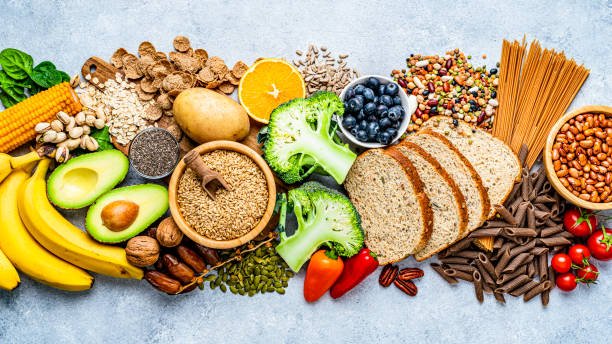Increasing your daily intake of protein—commonly referred to as eating more protein can be a game changer for your health. Protein is a fundamental building block of muscles, skin, hormones, and enzymes. Whether your goal is weight loss, muscle gain, improved energy, or overall wellness, protein plays a vital role in supporting it.
It helps repair tissue, build lean mass, control hunger, and even stabilize blood sugar levels. In today’s fast-paced world, where quick meals often lack proper nutrition, understanding how to prioritize protein in a balanced, sustainable way is key. This article breaks down why more protein matters, how much you really need, the best high-protein foods, and how to fit them easily into your daily routine.
Why More Protein Matters
1. Builds and Maintains Muscle Mass
Protein is essential for muscle recovery and growth. When you consume enough protein—especially in combination with resistance training—you give your body the tools it needs to rebuild and strengthen muscle fibers. This is crucial for athletes, older adults, and anyone aiming to improve body composition.
2. Increases Satiety and Reduces Hunger
Compared to carbs and fats, protein is the most filling macronutrient. It reduces hunger hormones like ghrelin and boosts satiety hormones, helping you feel fuller longer. This can reduce overall calorie intake and support healthy weight loss or weight maintenance.
3. Supports Blood Sugar Control
Including protein with every meal can help slow the absorption of carbohydrates, preventing blood sugar spikes and crashes. This makes it particularly beneficial for individuals managing diabetes or insulin resistance.
4. Boosts Metabolism
Protein has a high thermic effect, meaning your body burns more calories digesting it compared to fats or carbs. This increases your total energy expenditure slightly and contributes to a more active metabolism.
5. Supports Hair, Skin, Hormones, and Immunity
Protein isn’t just for muscles. It helps form enzymes, hormones, and immune cells, and contributes to healthy skin, nails, and hair. Getting more protein ensures these essential systems are well-supported.
How Much Protein Do You Really Need?
The Recommended Dietary Allowance (RDA) for protein is 0.8 grams per kilogram of body weight. That equals about 46 grams per day for the average woman and 56 grams per day for the average man.
However, needs vary:
- Active individuals: 1.2–2.0 g/kg body weight
- Older adults: 1.0–1.5 g/kg to prevent muscle loss
- Weight loss goals: 1.6–2.2 g/kg to preserve muscle while reducing fat
A general guideline for optimal distribution is 25–30 grams of protein per meal.
Best Sources of Protein
Animal-Based Sources (Complete Proteins)
- Eggs – High-quality, versatile, ~6 grams each
- Greek Yogurt – 18–20 grams per serving, with added probiotics
- Chicken & Turkey – 25–30 grams per 3 oz cooked portion
- Fish (Salmon, Tuna) – Rich in omega-3s and ~20 grams of protein
- Cottage Cheese – 25 grams per cup
- Lean Beef or Pork – High in iron and B12
Plant-Based Sources
- Lentils & Beans – ~9 grams per half cup cooked
- Chickpeas & Edamame – Great for fiber and protein
- Tofu & Tempeh – 10–20 grams per serving, versatile in dishes
- Nuts & Seeds – Almonds, pumpkin seeds, and hemp seeds are especially protein-dense
- Quinoa & Whole Grains – Quinoa has all nine essential amino acids
Easy Ways to Eat More Protein Daily
- Prioritize Protein at Every Meal
Start with eggs, Greek yogurt, or protein smoothies in the morning. Add grilled chicken, legumes, or tuna to salads or grain bowls at lunch and dinner. - Include Protein in Snacks
Choose snacks like string cheese, roasted chickpeas, boiled eggs, or mixed nuts. These help you stay full between meals. - Use Protein Boosters
Add chia seeds, nut butters, or protein powder to oatmeal, yogurt, or smoothies for a quick bump in grams. - Prep High-Protein Meals Ahead
Cook extra portions of chicken, beans, or tofu to use in wraps, salads, or stir-fries throughout the week. - Mix Animal and Plant Proteins
Combining different sources—like beans and rice or eggs and spinach—creates nutrient-dense meals and helps meet amino acid needs.
Sample High-Protein Daily Plan
| Meal | Food Combo | Protein (approx.) |
|---|---|---|
| Breakfast | 2 eggs + Greek yogurt + chia seeds | 30g |
| Snack | Cottage cheese + handful of almonds | 20g |
| Lunch | Chicken quinoa bowl with black beans | 35g |
| Snack | Boiled egg + protein smoothie with peanut butter | 20g |
| Dinner | Baked salmon + lentils + roasted vegetables | 30g |
Is Too Much Protein Bad?
For most healthy people, moderately high protein intake is safe. But extremely high levels—especially from red or processed meats—can have drawbacks:
- Kidney stress (in those with kidney disease)
- Heart health concerns from excess saturated fat
- Nutrient imbalance if high protein crowds out vegetables, fiber, and healthy fats
- Digestive issues like constipation or bloating
Aim for balance and variety, and consult a healthcare provider if you have medical concerns.
Read Also: Data Labeling for Gen AI: Essential Guide & Best Practices
Conclusion
Adding more protein to your diet can enhance nearly every area of your health—from building lean muscle and burning fat to improving your energy, digestion, and immune resilience. By eating a well-rounded mix of high-quality animal and plant-based sources, you can reach your daily protein needs without relying on supplements or restrictive diets. Focus on consistency, not perfection: include protein in every meal, make smart swaps, and listen to your body.
While more protein offers many benefits, it’s important to approach it as part of a balanced lifestyle—pairing it with whole grains, fiber, healthy fats, and colorful vegetables. For most people, a range of 1.2 to 2.0 grams per kilogram of body weight daily is ideal, depending on age, activity level, and health goals. Ultimately, getting enough protein isn’t just about fitness—it’s about fueling your body with what it needs to stay strong, energized, and vibrant every day.
FAQs
1. How can I add more protein to my diet easily?
Eat protein-rich foods at every meal—such as eggs, yogurt, lean meat, legumes, or nuts. Include high-protein snacks and consider adding seeds or powders to smoothies.
2. What happens if I eat more protein?
You may feel fuller longer, support muscle growth, improve metabolism, and better regulate your blood sugar. However, excessive amounts without balance could lead to health issues.
3. What are the best high-protein foods?
Top sources include eggs, chicken, fish, lentils, tofu, cottage cheese, Greek yogurt, quinoa, and almonds.
4. How much protein should I eat per meal?
Aim for 25–30 grams of protein per meal to optimize muscle maintenance and satiety throughout the day.
5. Can eating too much protein be harmful?
Yes—especially if it replaces important nutrients or if you have kidney problems. Balance is key for long-term health and energy.





